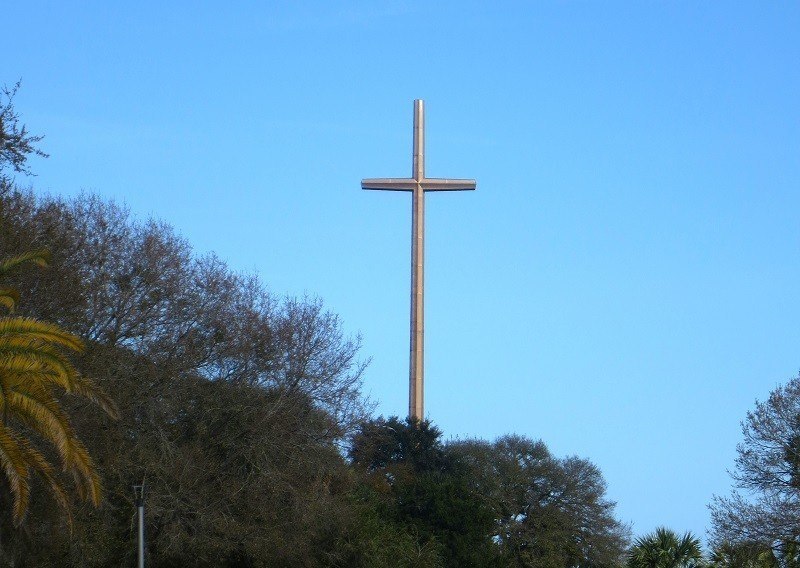
St. Augustine is home to the 208-foot Great Cross at Our Lady of La Leche Shrine. According to a plaque at the base of the cross, the giant rood stands as a reminder of “the religious beginning of our nation.” Source: Susan Sims
Although St. Augustine had a long history of multiculturalism–the city was home to one of America’s first professional Negro League baseball teams–segregationists fought against the integration of the area’s schools in the 1960s. In response, Martin Luther King Jr. and the Southern Christian Leadership Council marched on the city and held sit-ins and other non-violent protests.
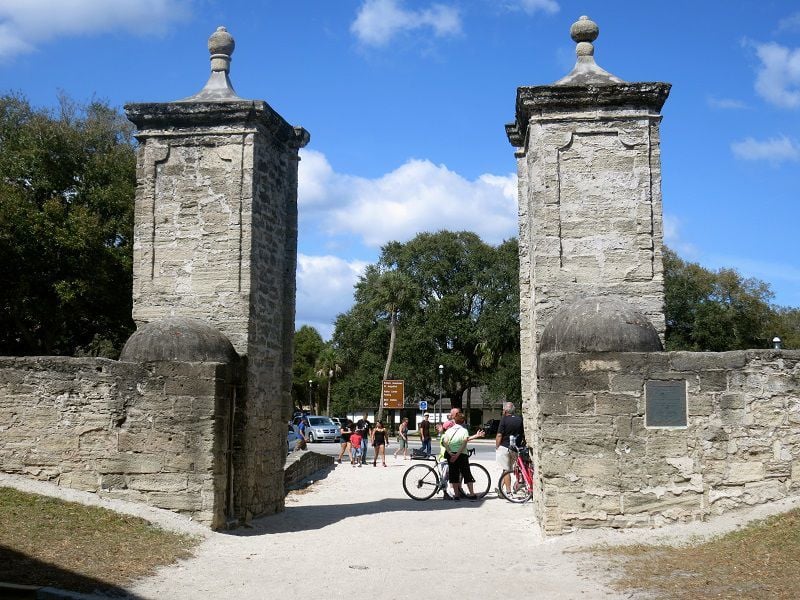
These walls still watch over the heart of the city, looming over the northern end of St. George Street. Source: Susan Sims
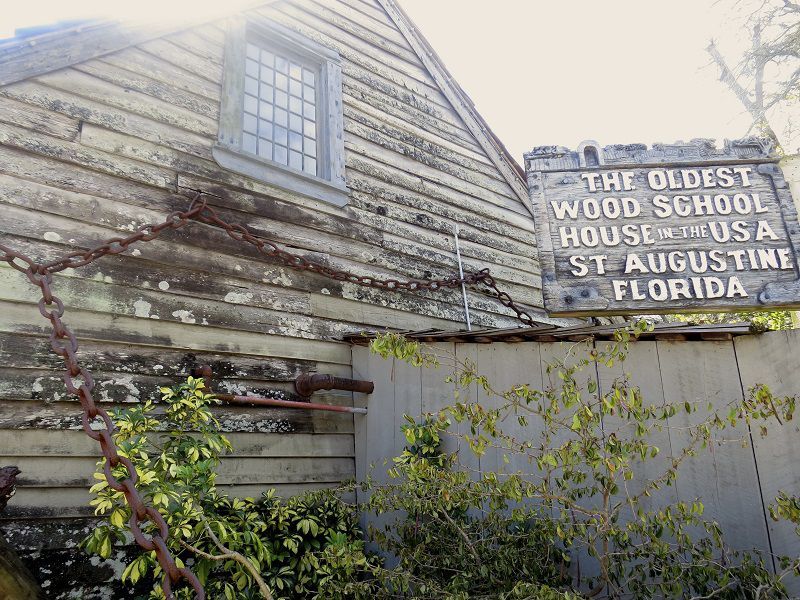
This old wooden schoolhouse is now a popular tourist attraction. It was constructed out of cedar and cypress, put together with handmade nails. Source: Susan Sims
In 1964, MLK was arrested for protesting segregation, a fact the town would like to forget these days. Of course, integration would eventually come to St. Augustine. The town was a multicultural city from its inception, though a handful of powerful people refused to remember that history.

Source: Wikimedia
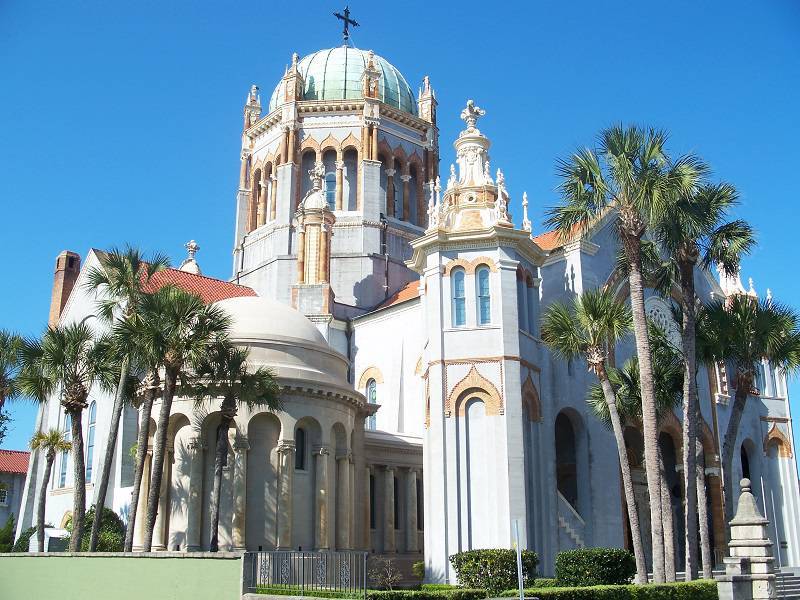
Memorial Presbyterian Church is a prime example of Neo-Renaissance architecture in the town. It embraces French Baroque features in its balanced towers and ornate roofline. Source: Wikipedia
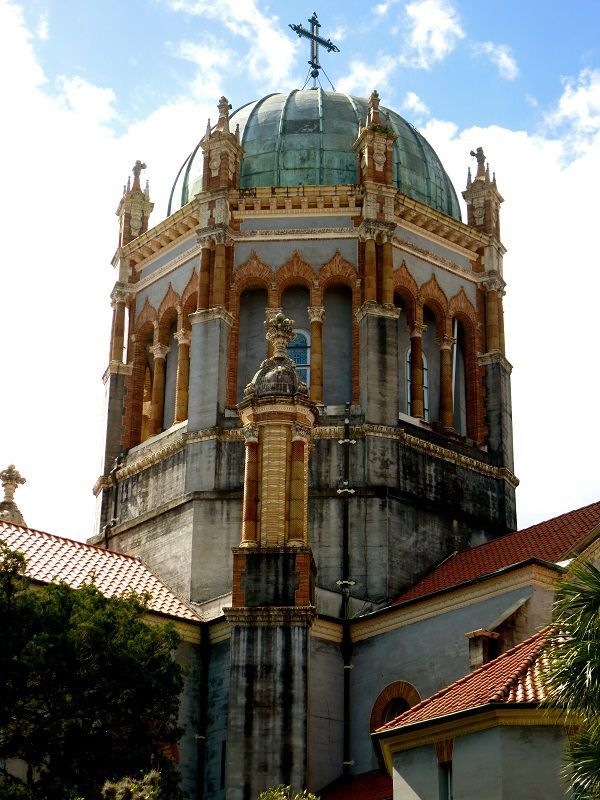
The church was also inspired by St. Mark’s Basilica in Venice, which is an example of Italo-Byzantine architecture. The Byzantine influence is notable in the large dome, the combination of terracotta elements and stone, and the geometric entry. Source: Susan Sims
From Spanish Catholic monuments to the oldest masonry fort in the continental United States, St. Augustine wears the history of America on its skin. As its 450th birthday approaches, we realize that the past isn’t always pretty, but reminds that with hard work and compassion, we can build something beautiful out of conflict. Happy Birthday, St. Augustine.
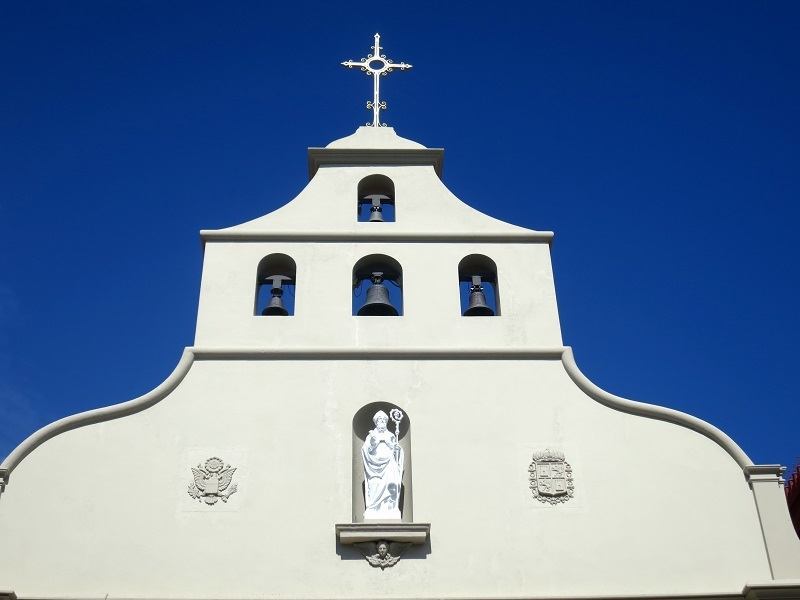
The Cathedral Basilica is the oldest parish of a permanent European settlement in North America, outside of Mexico. The cathedral was burned four times, and with each reconstruction, builders added various architectural elements from the Classical, Spanish missionary and Amerindian styles. Source: Susan Sims
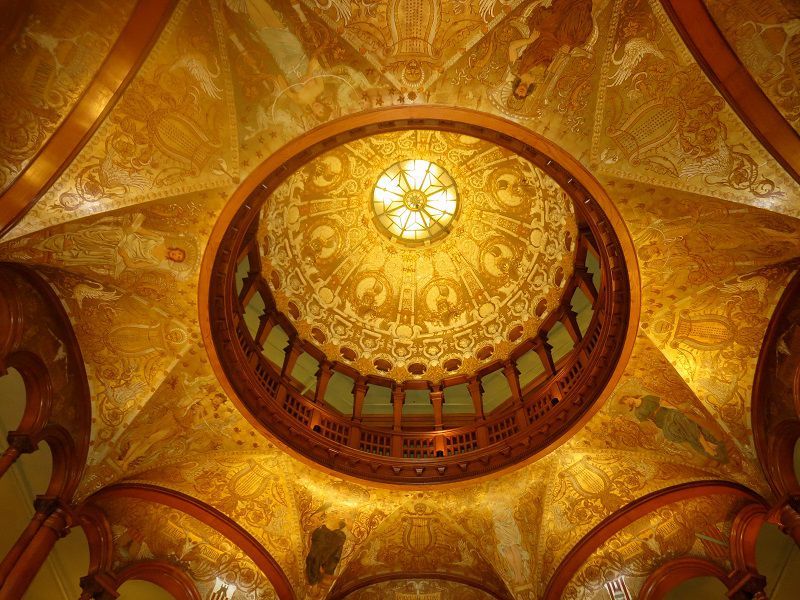
Renaissance-style murals and art grace the walls and ceilings of Flagler College. The dome in the main lobby portrays the zodiac and the seasons. Source: Susan Sims
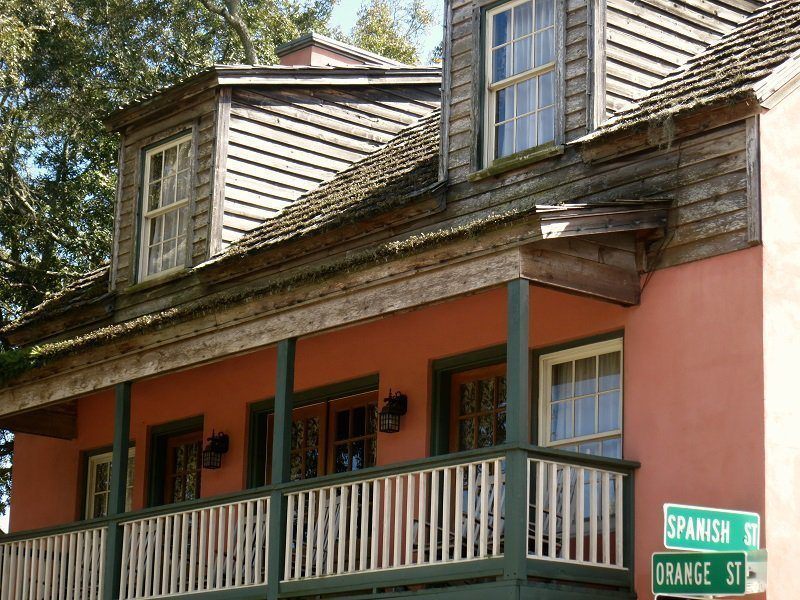
This balcony is reminiscent of the French and English architecture of the colonial period. Source: Susan Sims
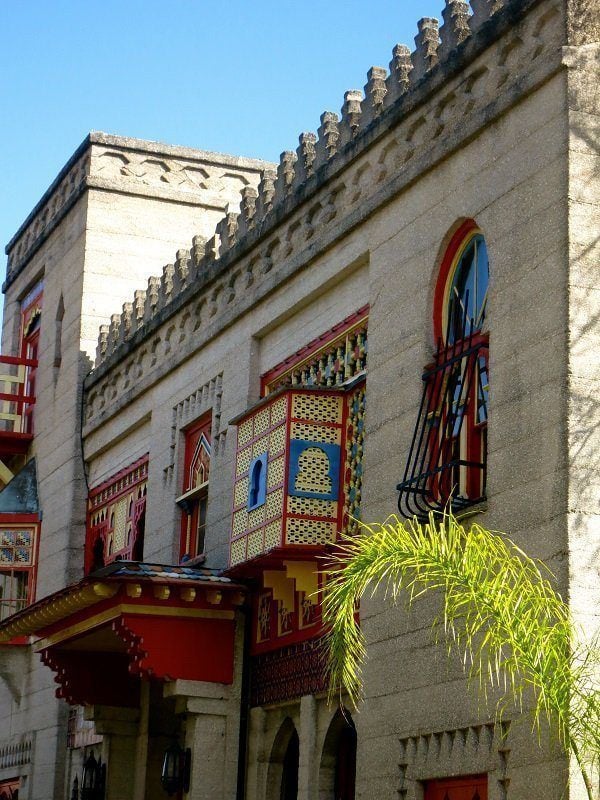
Eccentric millionaire Frank W. Smith built Zorayada’s Castle in 1883 as a private residence. It is based on the Moorish architecture of the Alhambra Palace, and is an example of Florida’s early fantasy architecture. Source: Susan Sims
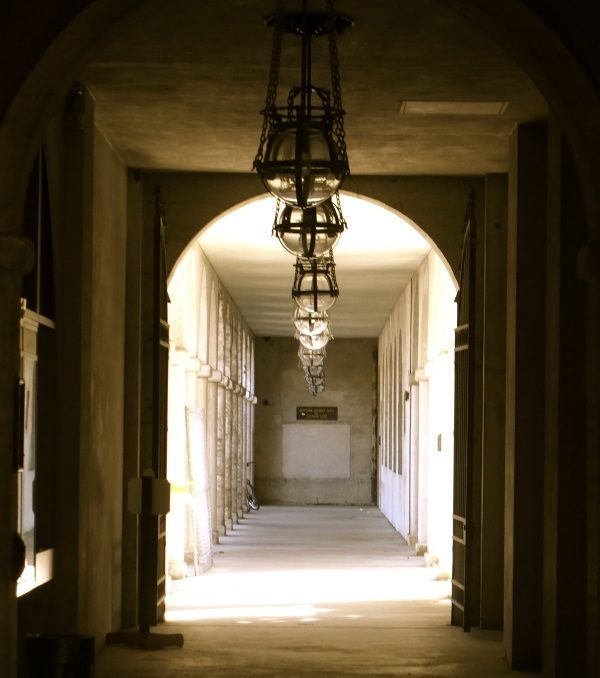
The Lightner Museum resides in what was once the Alcazar Hotel, built by Henry Flagler. The hotel was built in 1887 over a creek that was filled in using earth from Fort Mose, which was destroyed in 1740. Source: Susan Sims
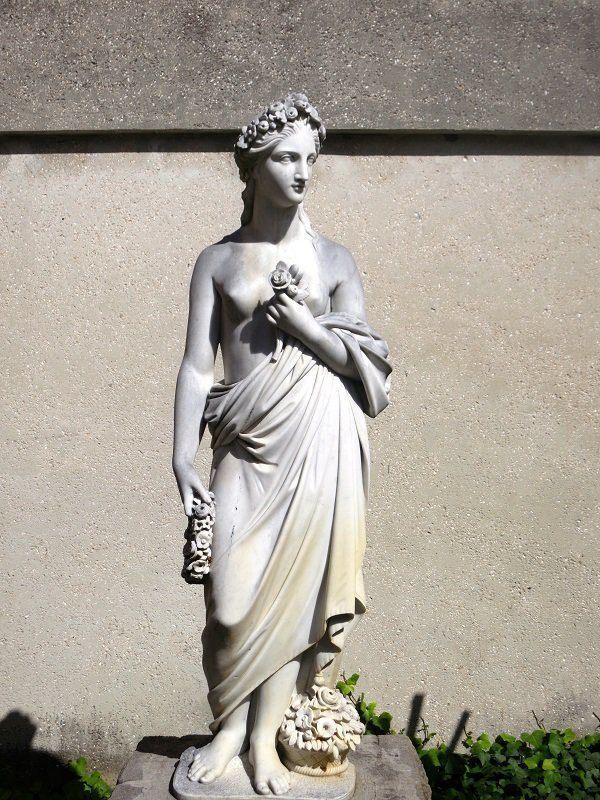
The Lightner Museum gardens feature Greek statues and Victorian gardens. Source: Susan Sims
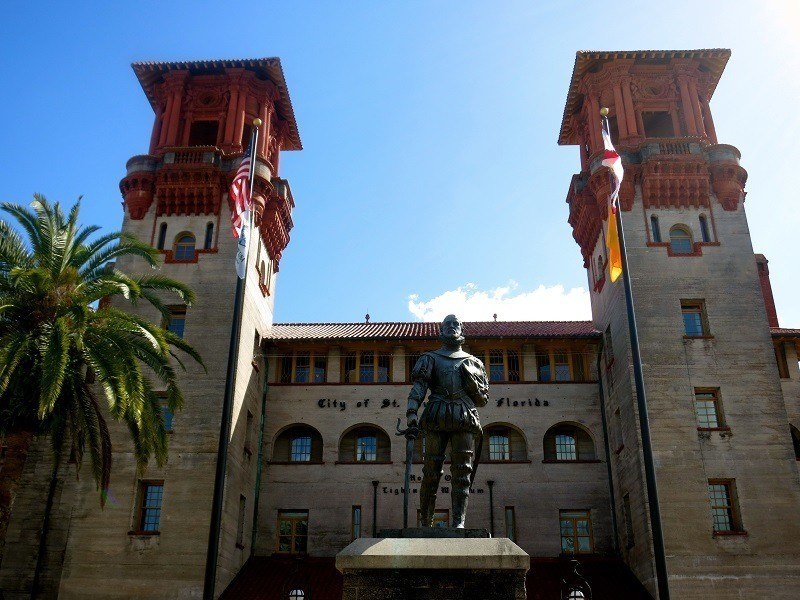
While the outside of the Lightner was created in the Spanish style, the inside is home to Victorian rooms, Native American artifacts and a Turkish bath. Source: Susan Sims
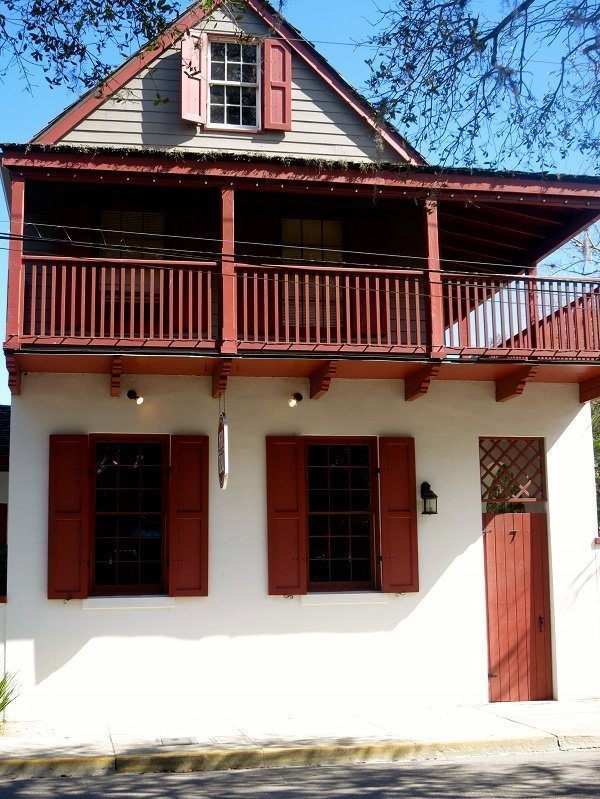
Many homes were constructed using the Amerindian knowledge of building with coquina and stone. Source: Susan Sims





